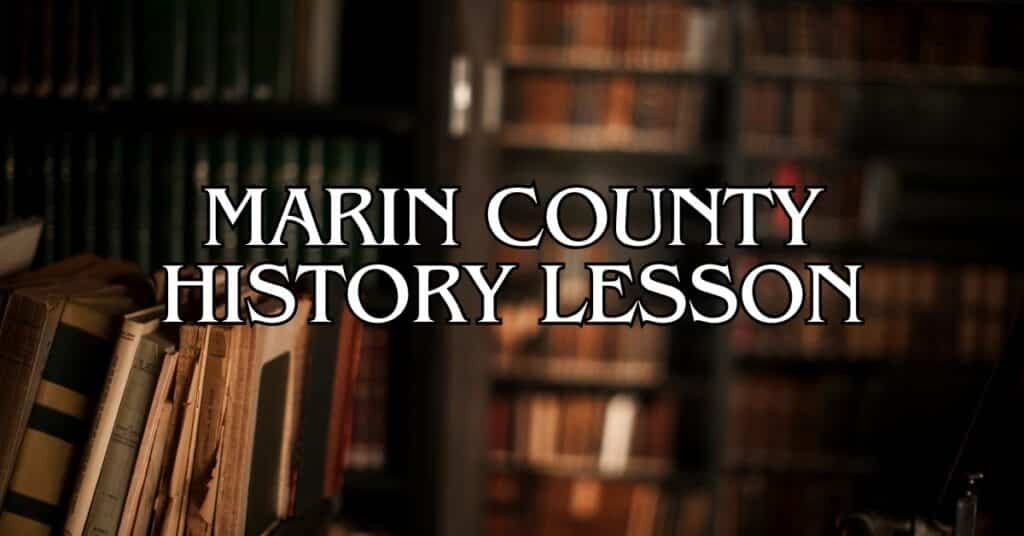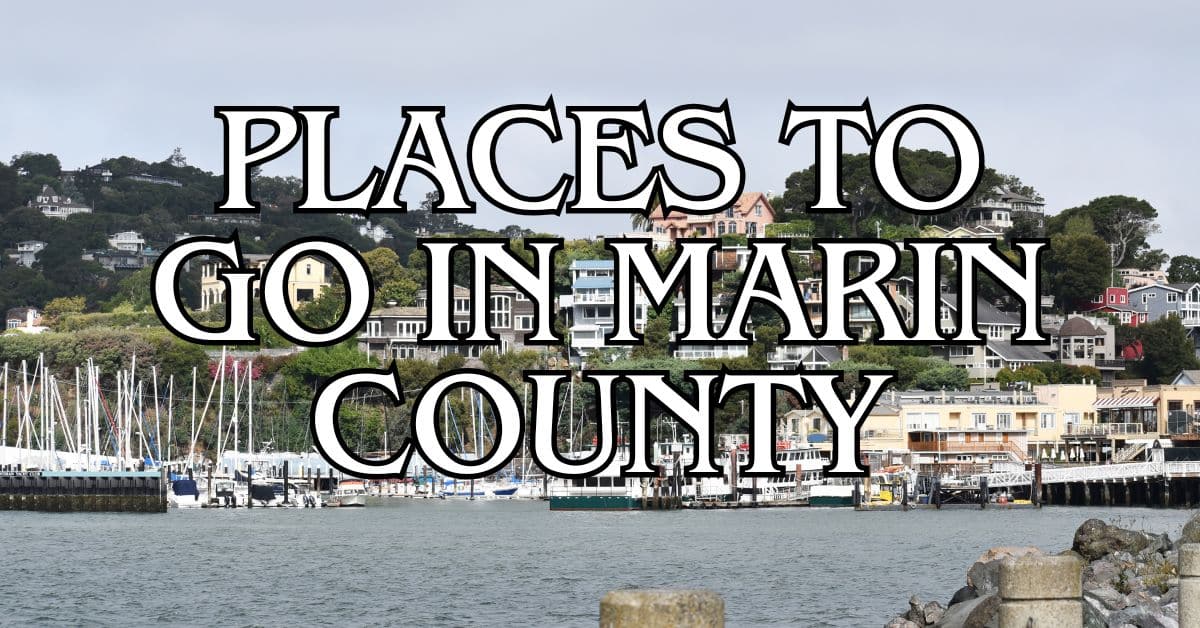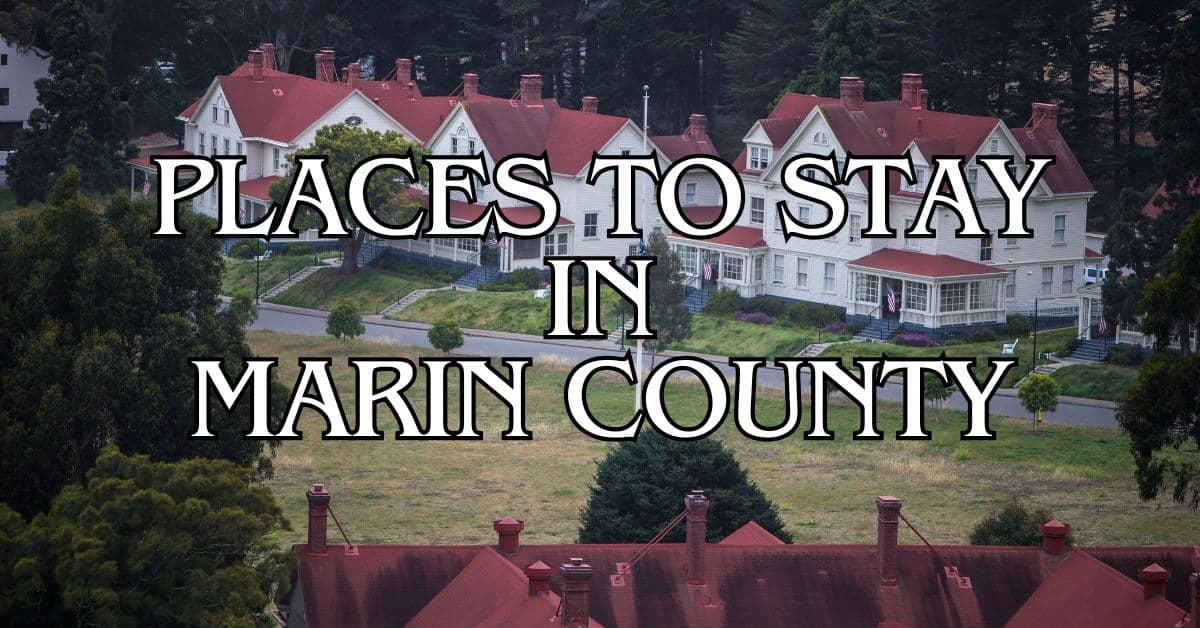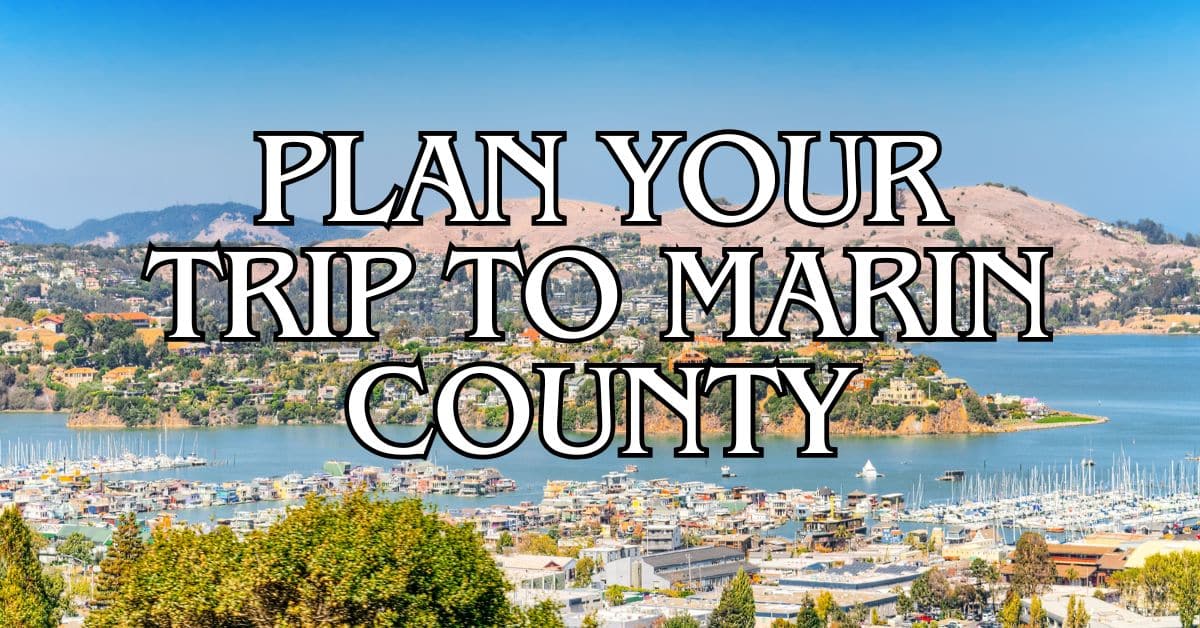Tucked into the Tiburon Peninsula in Marin County, you’ll find Paradise Cay—a waterfront community with roots that go back further than you might guess. Long before it became a boating hotspot, this area went by “Moseleyville,” and was part of the old Reed and Cooper land grants. Businessman Benjamin Buckelew picked up the property in 1850, setting the stage for what would come much later.
Paradise Cay took shape in the early 1960s, one of the last landfill projects allowed in San Francisco Bay, turning old tide lots into prime waterfront real estate. Developers landed on the name “Paradise Cay” to evoke its dreamy location, and set out to build a neighborhood where homes had their own canals and boat access.
Discover hand-picked hotels and vacation homes tailored for every traveler. Skip booking fees and secure your dream stay today with real-time availability!
Browse Accommodations Now
Today, Paradise Cay is still unincorporated, technically County Service Area #29. That status lets residents keep their distinct waterfront lifestyle and hang on to the area’s nautical vibe. The canals and boat slips are still the heart of the place, and honestly, it’s tough to find another Marin neighborhood quite like it.
Geographical Setting and Surroundings
Paradise Cay carves out a unique spot on the Tiburon Peninsula, shaped by the land and its neighbors. The waterfront location isn’t just for show—it’s really shaped how the community looks and feels.
Location of Paradise Cay
Paradise Cay sits on the eastern edge of the Tiburon Peninsula in Marin County, California. It’s a little enclave, surrounded entirely by the town of Tiburon, but it keeps its own identity. If you flew straight north from San Francisco, you’d hit Paradise Cay after about 12 miles—close enough to the city, but it definitely feels a world away.
With its spot right on San Francisco Bay, residents get direct water access. Canals and channels wind through the neighborhood, so a lot of homeowners can dock their boats right in their backyard. That’s really what sets Paradise Cay apart from other communities in Marin.
The whole area covers around 75 acres, and honestly, it’s the water access that really defines the place.
Natural Features of the Area
San Francisco Bay hugs the eastern side of Paradise Cay, serving up sweeping views and plenty of options for getting out on the water. The waters here are pretty calm, which makes boating popular and, let’s face it, a lot more relaxing.
The Tiburon Peninsula rises up to the west, with rolling hills that climb away from Paradise Cay’s flatlands. Up near Ring Mountain, you can take in some incredible vistas—both of the bay and Richardson Bay beyond.
Triangle Marsh is right nearby, offering crucial wetland habitat for wildlife. It’s a nice reminder that even in a developed area, nature still has a foothold.
The weather here? Pretty classic Bay Area—mild, foggy summers and relatively warm winters. There’s not as much rain as you’ll find in some other parts of Marin.
Neighboring Communities and Landmarks
Tiburon wraps all the way around Paradise Cay and is its closest neighbor. The downtown stretch, with its shops and restaurants, is just up Tiburon Boulevard.
Belvedere, that well-heeled island town, is just to the northwest. Even though it’s its own city, Belvedere shares a lot with Tiburon and Paradise Cay—services, schools, and that general sense of community.
Head west across Richardson Bay and you’ll hit Strawberry and Mill Valley. Sausalito is a bit farther down the Marin coast.
Angel Island State Park sits out in the bay, visible from much of Paradise Cay. It’s a favorite for hiking and a bit of local history—worth a visit if you haven’t been.
Corte Madera is inland to the northwest, and Highway 131 connects it to the Tiburon Peninsula.
Early History and Land Use
The land that would become Paradise Cay has seen a lot—thousands of years of human history, from indigenous peoples to Spanish colonizers, and then on to early American settlers.
Indigenous Peoples and Pre-colonial Era
Long before anyone called it Paradise Cay, this was part of the ancestral territory of the Coast Miwok people. They lived along these shores for thousands of years before Europeans arrived.
The Coast Miwok set up seasonal camps near Richardson Bay and the Tiburon Peninsula, gathering shellfish, hunting, and foraging in the hills. Their understanding of the land and climate let them thrive in this Mediterranean environment.
Archaeologists have found evidence of their trade networks and daily life—shell middens around the peninsula tell stories about how they lived and cared for the land.
Spanish and Mexican Influence
Spanish explorers showed up in the Bay in 1775, and things changed fast. By 1817, Mission San Rafael was up and running, and many Coast Miwok were drawn into the mission system, losing much of their traditional way of life.
When Mexico took over from Spain in 1821, the missions were secularized and huge ranchos were handed out as land grants. The Tiburon Peninsula, including what’s now Paradise Cay, became part of Rancho Corte Madera del Presidio.
These ranchos were mostly about cattle and farming, and the area stayed pretty quiet—lots of open shoreline and untouched marshes.
Development Before Paradise Cay
Before it became Paradise Cay, locals called the area “Moseleyville,” after the family who owned it. Through the late 1800s and early 1900s, the Tiburon Peninsula started to grow, especially as travel to San Francisco got easier.
After World War II, the Bay Area boomed. People needed new places to live, and the Moseley family saw the potential in their waterfront land.
By the late 1950s, plans were in motion to dredge and fill parts of Richardson Bay, creating the canal-front lots that define Paradise Cay now. The California City Gazetteer noted the plans around this time, marking the shift from rural land to a planned waterfront neighborhood.
Founding and Development of Paradise Cay
Paradise Cay started out as humble marshland and, over time, became a standout waterfront community in Marin. Turning marshland into a neighborhood with docks and canals changed the face of this part of the Tiburon Peninsula.
From Moseleyville to Modern Paradise Cay
Once called Moseleyville, the area was part of the mid-century development wave sweeping the Tiburon Peninsula. The first homes in what would become Paradise Cay went up in the early 1960s.
The name “Paradise Cay” was picked to sell the waterfront dream, but plenty of locals still used “Moseleyville,” nodding to the family who started it all. Creating the community meant dredging out waterways and building up house lots from what used to be marsh.
Homes were designed with water in mind—lots of boat access, lots of water views. This all fit right in with California’s postwar housing boom and the growing appeal of waterfront living.
The Moseley Family and Key Figures
Tim Moseley led the charge in the 1960s, shaping the first vision of Paradise Cay. His son, Tom Moseley, kept things moving forward and helped carry on the family’s influence.
The Moseleys stayed involved as the years went by, with several generations helping to guide the area’s growth. Their role was more than just building houses—they helped define the community’s personality.
People in the neighborhood embraced the “Moseleyville” nickname, which says a lot about how the family’s legacy stuck around. Their ongoing presence gave the place some continuity as it grew up from a new development into an established community.
Major Construction and Expansion Phases
The early 1960s kicked off the transformation, with developers filling in parts of the bay and dredging channels so future homeowners could have water access. The first houses went up soon after.
More homes followed through the 1960s and 1970s, always with water access as the main draw. Each phase added to the community, but the focus never really shifted away from the waterfront lifestyle.
Infrastructure—roads, utilities, and, of course, the canal network—grew alongside the homes. Paradise Cay developed ties with nearby spots like Triangle Marsh and Bel Aire as the peninsula changed.
Sitting between Belvedere-Tiburon and other Marin communities, Paradise Cay became part of a bigger trend of waterfront neighborhoods. Its location helped it stay desirable as Marin County kept growing.
Waterfront Community and Lifestyle
Paradise Cay’s vibe is all about its spot on San Francisco Bay. The whole setup—homes, streets, everything—centers around boating, sailing, and water recreation. That’s been true since the 1960s, and it’s still the draw today.
Marinas and Boating Facilities
Several marinas anchor the community, offering boat slips, maintenance, and storage for both locals and visitors. The main harbor features protected docks, so boats are shielded from rougher bay currents.
Most homes on the water have private docks, which is a big reason people move here. It’s a rare perk, even for Marin.
The marinas can handle everything from little sailboats to hefty motor yachts. Community docks get regular upgrades to keep up with safety standards and the needs of boaters.
Focus on Sailing Activities
Sailing is a huge part of life here. The Tiburon Yacht Club isn’t physically in Paradise Cay, but a lot of residents are members and take part in races and regattas.
The bay around Paradise Cay is ideal for sailing—steady winds, sheltered spots for beginners, and plenty of weekend activity. On a good day, you’ll see sails everywhere.
Sailing lessons are easy to find, with classes for both adults and kids. Some folks here have ties to the California Maritime Academy, so there’s no shortage of maritime know-how in the community.
Locals sometimes organize informal meetups to swap stories, share tips on navigation or boat upkeep, and talk racing strategy. It’s a tight-knit, water-loving crowd.
Recreational Fishing and Boating
Fishing is still a favorite pastime for Paradise Cay residents. The waters of San Francisco Bay offer up salmon, halibut, and sole if you know when to go and where to drop a line.
Plenty of folks here own fishing boats that are just right for bay conditions. On weekends, you’ll often see neighbors heading out early or swapping stories and sharing their catch back on shore.
Motorized boating’s big too—residents love taking day cruises over to Angel Island or even San Francisco. There’s something about seeing the Bay Area from the water that never really gets old.
Summer usually brings out some lively boating events, with neighbors coming together for a bit of friendly competition and celebration. It’s a big part of what makes Paradise Cay feel like its own little world on the water.
Community Structure and Demographics
Paradise Cay has shifted over the years, growing from a small waterfront outpost into a distinct unincorporated area in Marin County. Its changing population kind of mirrors what’s happened across the Tiburon Peninsula as a whole.
Population Trends and Notable Residents
When Paradise Cay first got going, it was a close-knit spot that mostly drew in boating fans and folks looking for something quieter than Tiburon proper.
As word spread, more people moved in. What started as a haven for maritime enthusiasts gradually attracted professionals commuting to San Francisco and families interested in the schools nearby.
Even with these changes, Paradise Cay keeps its own identity but stays connected to the wider Belvedere-Tiburon area. Kids here usually go to local district schools, so there’s plenty of overlap with neighboring communities.
Unincorporated Community Status
Paradise Cay sits as an unincorporated enclave, fully surrounded by Tiburon. Marin County officially recognizes it as County Service Area No. 29 (CSA #29).
With this setup, residents can approve special assessments and taxes to fund improvements unique to their community. The county put this arrangement in place to give Paradise Cay some autonomy, even though it’s still under county jurisdiction.
Instead of running its own municipal government, Paradise Cay coordinates with county officials. The area once drew the attention of developers like Pacific Union, but these days it’s all about local coordination with Marin County.
This unusual setup means Paradise Cay stands apart from Tiburon, but residents still enjoy county services and infrastructure.
Paradise Cay’s Relationship With Surrounding Areas
Paradise Cay’s geography is kind of quirky—it’s an unincorporated pocket completely surrounded by Tiburon, which makes for a unique relationship with the rest of Marin County. Local rules and regional trends have both shaped what the place has become.
Connections to Tiburon and Belvedere
Paradise Cay’s relationship with Tiburon is a bit complicated. Even though Tiburon wraps all the way around it, Paradise Cay runs as County Service Area No. 29 and handles its own governance.
That gives residents a sense of independence, even as they use Tiburon’s amenities—shops, restaurants, services, you name it.
Belvedere, right next door, shares some of the same waters. Boaters from both places cross paths on Richardson Bay, so there’s plenty of overlap, both social and recreational.
Property values and development here definitely feel the pull of these affluent neighbors. Paradise Cay remains desirable as a waterfront spot, with entry costs that are often a bit lower than Tiburon or Belvedere.
Influence of San Francisco and Marin County
Back in the early 1960s, when Paradise Cay was developed, San Francisco Bay’s regulations were changing fast. It was apparently one of the last big landfill projects allowed before tougher environmental rules kicked in.
Marin County provides essential services here—like keeping the boating channels open—since Paradise Cay isn’t incorporated like Mill Valley or Sausalito.
Being close to Angel Island and Richardson Bay really shapes the community’s maritime vibe. Residents get wide-open views of San Francisco, which keeps the city close in mind, but life here is much more laid-back—classic Marin County.
Many folks commute to San Francisco, Corte Madera, or other job centers. Paradise Cay ends up as a bedroom community with strong ties to the region, but it still hangs onto its waterfront personality.
Environmental Features and Conservation Efforts
Paradise Cay sits right at the edge of land and water, making for a pretty unique environment. There are protected marshlands here, and the area supports a surprising variety of wildlife, so local conservation always stays in focus.
Ecological Significance of Triangle Marsh
Triangle Marsh is one of Paradise Cay’s real treasures. This tidal wetland acts as a buffer against flooding and erosion, and it also filters out pollutants before they hit the bay. You’ll find native salt-loving plants like pickleweed and cordgrass here, which provide a home for all sorts of creatures.
The Marin Conservation League has put a lot of effort into protecting Triangle Marsh. In the 1990s, locals managed to stop development that would’ve damaged the area. These days, people focus on removing invasive species and restoring habitat.
The marsh gives birds a place to breed and serves as a nursery for young fish. Restoration work keeps the tidal channels open, so water can move in and out the way it’s supposed to.
Wildlife and Marine Life of the Bay
Being right on San Francisco Bay means Paradise Cay is great for spotting marine and bird life. Fish like salmon, halibut, and sole pass through at certain times of year, keeping recreational fishing interesting and, hopefully, sustainable.
Birders can catch sight of great blue herons, egrets, and osprey hunting along the shoreline. In migration season, shorebirds flock here along the Pacific Flyway.
Harbor seals sometimes pop up in the area, a good sign that the Bay’s health is improving after years of conservation efforts.
Local groups regularly monitor water quality and wildlife. Their work helps track how well protection efforts are working and guides what comes next for conservation in this little corner of Marin County.
Cultural and Recreational Significance
Paradise Cay really is a hub for boaters and local traditions, giving it a personality you don’t find everywhere in Marin County. The waterfront draws people in for all kinds of marine activities.
Role of the Tiburon Yacht Club
The Tiburon Yacht Club is at the heart of Paradise Cay’s social and recreational life. Since the mid-20th century, it’s been both a gathering spot and a resource for sailors of all skill levels. The club keeps up several docks and facilities for members.
Racing events happen regularly during sailing season, and people come from all over Marin County and beyond to take part. There are sailing lessons and youth programs too, so the next generation can get in on the fun.
But it’s not all competition. The yacht club also throws monthly dinners, holiday parties, and casual get-togethers, making it easy for neighbors to connect over their shared love of the water.
Annual Events and Local Traditions
Several annual celebrations highlight Paradise Cay’s maritime spirit. “Opening Day on the Bay” kicks off boating season every spring with a boat parade and all kinds of festivities.
The Summer Solstice Regatta draws sailors from nearby communities for some friendly racing, then everyone gathers on shore for food, music, and activities—even if you’ve never set foot on a boat.
Come winter, there’s the “Lighted Boat Parade,” where boat owners go all out decorating their vessels with lights. The parade circles the cay, turning the water into a floating light show visible from just about every home.
Community clean-up days show how much folks here care about the environment. Volunteers pick up shoreline debris and help monitor water quality, doing their part to keep the cay’s natural resources healthy.
Modern Paradise Cay
Paradise Cay today is a distinct waterfront community in Marin County, with a real nautical vibe and a housing market that’s anything but ordinary. It keeps its character but adapts as times change.
Current Real Estate and Housing Market
Most homes here are right on the water, drawing in boating fans. Houses were mostly built between the 1960s and 1980s, but many have seen big updates lately.
Home values are usually above the Marin County average, thanks to waterfront access and private docks. There are about 225 homes, and most have docks that fit boats up to 50 feet.
Inventory stays pretty tight, so competition can get fierce. Being close to Tiburon means residents have access to good schools, like Bel Aire Elementary in the Reed Union School District.
You’ll see everything from mid-century modern to sleek contemporary architecture. Most places have big windows showing off those bay views.
Utilities and Infrastructure
As County Service Area No. 29, Paradise Cay manages its own infrastructure needs. Shoreline protection gets a lot of attention, especially with sea level rise on everyone’s mind.
Marin Municipal Water District handles water and sewer, and the county takes care of the roads. Internet’s gotten a lot better lately—fiber optic finally made it in.
There aren’t any shops or restaurants in the neighborhood, so folks head to Tiburon for errands. Public transit? Not so much—most people rely on their cars.
Drainage is still a headache when it rains hard, but community fees help pay for upkeep of shared spaces and dredging the waterways for boat access.
Recent upgrades include new street lighting and better public access points on Paradise Drive. It’s a work in progress, but the improvements make a real difference.
Paradise Cay in Popular Culture and Media
Even though it’s a small place, Paradise Cay pops up in the media now and then. The waterfront setting and quirky character have caught the eye of a few notable folks and publications.
Notable Mentions in Publishing and Sports
Olympic gold medalist Jonny Moseley put Paradise Cay on the map for some. The freestyle skier, who took gold at the 1998 Nagano Olympics, grew up here and has talked about his hometown in interviews. His connection draws a little extra attention to this tucked-away spot.
The area’s also been featured in boating and lifestyle magazines, especially for its deepwater harbor and laid-back maritime lifestyle. Local yacht clubs and sailing events have shown up in regional publications like Marin Magazine, which has followed the community’s story since the 1960s.
Paradise Cay Bookstore and Related Entities
Paradise Cay Bookstore carved out its own little niche, focusing on maritime books and maps. It wasn’t a big place, but locals and visiting boaters would drop in for cultural touchstones or just to browse navigational guides and stories about regional history. There was always a bit of charm in that.
Then there’s Paradise Cay Publishing, a small press that popped up with a clear nautical bent. They put out everything from sailing how-tos to tales about Marin County’s maritime past. It’s a bit specialized, but that’s kind of the point, isn’t it?
Over in the business district, you’ll find art galleries that sometimes spotlight paintings of the harbor. These galleries throw events now and then, mixing residents with visitors who just love a good bit of maritime art or want to soak up some local flavor.
Future Prospects and Development
Paradise Cay is in an odd spot these days—torn between keeping its quirky waterfront vibe and dealing with the usual Marin County pressures to grow. Folks here have to think hard about how much change they want and how to hang on to whatever makes this little enclave actually feel like itself.
Anticipated Growth and Urban Planning
County planners say the area will probably see only modest growth in the next decade, thanks to current zoning that keeps things low-density and pretty residential. That seems fine by most people here, honestly.
They’ve lined up infrastructure work for 2026 through 2028—shoreline protection, better drainage, all that. The idea is to shore up against climate issues and help property values at the same time. Necessary, maybe a bit overdue.
The Marin County Board of Supervisors gave the green light to a study looking at expanding public dock access. If that actually happens, it could mean more visitors and maybe a little bump for local businesses. Of course, there’s always that tension between drawing a crowd and keeping things neighborly. It’s a balancing act, and no one pretends it’s easy.
Preserving Community Identity
Paradise Cay residents have banded together to protect their unique spot as an unincorporated enclave tucked inside Tiburon. The Paradise Cay Preservation Committee, which popped up in 2023, keeps pushing to maintain the area’s quirky, distinct vibe.
Thanks to their efforts, the committee got the town to adopt design rules that actually respect the old-school maritime look. If you’re building something new here, you’ve got to nod to that waterfront heritage—no bland boxes allowed.
Events like the annual Paradise Cay Waterfront Festival have really taken off lately, pulling people together and giving everyone a reason to celebrate. These gatherings keep old traditions alive and give newcomers a taste of what makes the place special.
Environmental conservation? That’s still at the heart of life here. Folks have teamed up with marine conservation groups, rolling up their sleeves for regular bay clean-ups and pitching in on habitat restoration along the shoreline. It’s not always glamorous, but it’s just part of living here.
Find available hotels and vacation homes instantly. No fees, best rates guaranteed!
Check Availability Now






